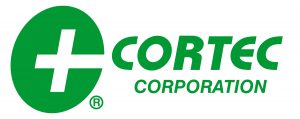Cortec’s new VpCI vacuum bags is an effective and economical proposition.
Unlike a standard VpCI bag, this new vacuum bag has an extra barrier that takes corrosion protection to a new level.
This new barrier prevents the chief agents of corrosion on metal parts (oxygen and moisture) from reaching the components. VpCI®-126 vacuum bags are ideal for long-term storage of metal parts.
Industries also use them to protect metal components from corrosion under harsh transportation conditions. This vacuum bag protects the metals from aggressive industrial atmospheres, dissimilar metal corrosion, corrosive salts (e.g., halides), etc.

How Cortec’s New VpCI Vacuum Bags Work
Similar to the standard VpCI®-126 bag, this new bag contains VpCI vapor phase corrosion inhibitors. This corrosion inhibitor works by diffusing and condensing an invisible molecular layer of protection on packaged metal parts.
This molecular layer is effective, regardless of whether the vacuum bag is in contact with the metal part or not. The best part about using VpCI®-126 vacuum bags is that you do not need to clean the parts before using them.
In addition, industries save a lot of time when using these vacuum bags because they are easily sealable using standard vacuum sealing equipment. This feature benefits industries that need to seal lots of metal parts quickly and correctly.
Industries can use this vacuum bag in metal parts packaging to pack multiple parts in a single bag.
Benefits of Metal Parts Packaging Using VpCI®-126 Vacuum Bags
These vacuum bags do away with the traditional method of corrosion protection which is pretty messy. The traditional way requires a worker to apply a layer of grease or oils on the surfaces of metal parts to protect them against corrosion.
After application, the parts would be packaged inside a plastic bag for storage or transportation purposes. The end user would then be forced to clean the metal parts before using them.
This traditional way of corrosion protection is ineffective and uneconomical. Plastic packaging bags do not guarantee corrosion protection. In addition, they are more costly because of increased taxes on plastic products and governmental restrictions.
On the other hand, the VpCI®-126 metal packaging vacuum bags are practical and economical. These bags are effective because they have an added moisture and oxygen barrier for corrosion protection.
They are additionally economical because they are recyclable. VpCI®-126 metal packaging vacuum bags are USDA-certified as they comprise 92% biobased content. It, therefore, means that these bags are eco-friendly.
A worker can quickly inspect metal parts packaged using this corrosion-inhibiting vacuum bag as the bag is transparent. It allows the worker to visually inspect and identify parts without the need to open the sealed bag.
Where to Use VpCI®-126 Vacuum Bags for Metal Parts Packaging
Cortec’s VpCI®-126 vacuum bags are ideal for use on both ferrous and non-ferrous metal parts. Examples of ferrous and non-ferrous metals include cast iron, aluminum, stainless steel, carbon steel, brass, copper, galvanized steel, etc.
This packaging film is ideal for storing auto parts, e.g., bolts, nuts, bearings, etc., on a long-term basis. It is also usable in other industries apart from the automotive industry.
Making Sense of it All
Unlike the standard VpCI®-126 packaging bags, this new vacuum bag from Cortec® Corporation is more effective in metal parts packaging. It has an added barrier of protection from the chief agents of corrosion – moisture and oxygen.
This bag is usable in many industries – the possibilities are endless. Contact us today to learn more about it and other products from Cortec® Corporation.
